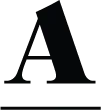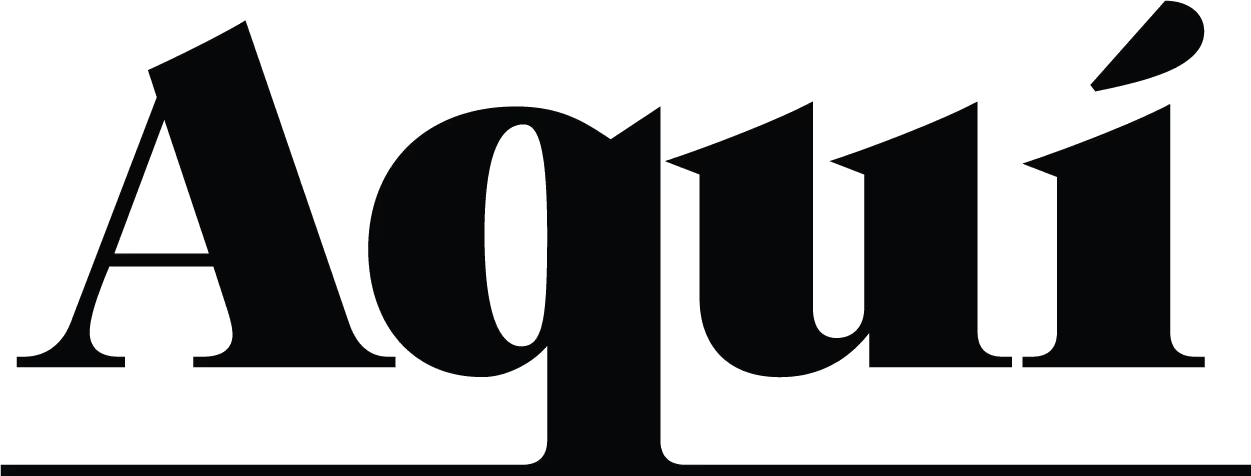Discovering Wyman, Funan, Kessels, & Confetti Studio
At Aquí, we take our cuppa Joe very seriously. Rest assured, because the same applies when it comes to design. As avid coffee drinkers, we often ask, “How do you like your coffee?” And as a creative boutique, we like to ask, “How do you like your design?” Joe is a blog segment where we - #TeamAquí - share our design inspirations.
Lance Wyman
We started the session watching Akram type ‘Lance Wyman’ into the Google search bar, which Maria responded with a shriek of delight. Once we were on the Lance Wyman website, everyone took a moment to admire the logos that he has created displayed in the shape of a whirlpool.


Akram’s favourite work is the WCVB Channel 5 Boston logo. We came across photos of numerous design applications which included the massive anchor desk in the WCVB-TV news studio. Created in the 70s, the symbol remains as the channel’s logo today, confirming its timelessness and versatility - design characteristics highly regarded by Akram.
The next work that we explored was, of course, the design for the 1968 Mexico City Olympic Games. The kinetic and op art parallel line typography is a style inspired by Mexican pre-hispanic and folk art as explained to us by Maria. An easily recognisable pattern, it was applied to postage stamps, entry tickets, murals, and many more. In Meggs’ History of Graphic Design, the design was mentioned as “one of the most successful in the evolution of visual identification.”
Design Bridge: Funan
We have all been to Funan recently and it really is an experience to be there. Intrigued by the branding (and way finders), Evelyn recently discovered the meaning behind Design Bridge’s work.

The Funan experience has been categorized into 6 ‘passion themes’ - Fit, Play, Craft, Taste, Chic and Tech. The team at Design Bridge created a bespoke visual language for each passion theme with the use of colours and patterns. The different elements all come together in the Funan logo, which we found out, was inspired by the cultural intersection location and architectural features. So cool, right? You can read more about it on Design Bridge’s page.
Failed It! by Erik Kessels
“Seek out failure. Train yourself to recognize it all around you. Get to know it and take it away for a romantic weekend. Failure isn’t fatal - quite the contrary. It’s downright fabulous.” - Erik Kessels

Yu Ting was on the KesselsKramer webpage when she came across a short foreword of the book ‘Failed It!’ by Erik Kessels. That is when she decided she should share it with the team by reading it out loud.
Erik Kessels is the creative director of KesselsKramer. He is also an artist, designer and curator who is particularly interested in vernacular photography. He publishes books specialising in absurdist found photography, and ‘Failed It!’ is one of them.


We do not seek failure in this digital era. If we can google it, then we should not get it wrong; we should not get lost. But Erik believes that taking the “wrong turn” and allowing ourselves to make mistakes are key parts of the creative process.
Confetti Studio
This is one of Maria’s favourite design studios. She used ‘energetic’ to describe the studio. She really liked the visual identity design for Spilt Milk, which was one of the finalists of Australian Premier’s Good Design Awards. It has a very playful yet avant-garde feel to it. For such a simple concept, there is a lot of room for movement when applying the design on printed collateral.


Exploring Space and Light with Olafur Eliasson and James Turrell
Maria also introduced us to two artists who work with light and space to create their artworks.
Olafur Eliasson
Eliasson’s installation Room for one colour (1997) was in the National Gallery’s exhibition Monochrome: Painting in Black and White in 2017 - 2018. In the installation, people walk into a room of yellow light and can only see shades of yellow, grey and black.
“The experience may vary, but the most obvious impact of the yellow light is the realisation that reality outside is very much conditioned by our perception of it: vision itself is not objective, and this realisation can help us begin to see ourselves and our world in a different light.” — Olafur Eliasson
James Turrell
Aside from being the man whose art inspired the set of Drake’s “Hotline Bling” video, Turrell is an American artist trained in perceptual psychology and has been experimenting with light as a medium since the mid-1960s. One of his massive works includes the large-scale artwork Roden Crater, which he built for 45 years in the Painted Desert region of Northern Arizona. He creates an immersive experience that lets you perceive light in organic and deliberate ways.


“My work is more about your seeing than it is about my seeing, although it is a product of my seeing. I’m also interested in the sense of the presence of space; that is space where you feel a presence, almost an entity - that physical feeling and power that space can give.” — James Turrell
“Please catch the second season of Abstract is out on Netflix!” - Maria
You may also like












